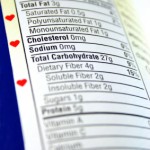 When it comes to food nutrition facts labels, our mission in the food labels industry is to communicate food and nutrition information to consumers appropriately. While there are clear and specific regulations governing what we can and cannot do on food labels, there are also shades of gray. How do you navigate the ambiguities?
When it comes to food nutrition facts labels, our mission in the food labels industry is to communicate food and nutrition information to consumers appropriately. While there are clear and specific regulations governing what we can and cannot do on food labels, there are also shades of gray. How do you navigate the ambiguities?
How to negotiate tricky food label challenges
Consider for example a couple of potentially tricky scenarios. How they were resolved provides a bit of insight into the creative approaches companies adopt to ensure 100% regulatory compliance on their food nutrition facts labels.
Scenario #1: New-to-the-world beverage depends on food nutrition facts labels to support its positioning in the highly competitive industry.
Vitality Distributing, a young start-up company, recently launched a new brand, the first of its kind – Avitae Caffeinated Water. Positioned as a healthier alternative to soda, Avitae needed to carved out a unique space in the fiercely competitive beverage industry and its food nutrition facts labels had to support it. This brand was the first-ever combination of natural caffeine and purified water and FDA compliance with food label regulations was absolutely essential to its successful launch. The most scrutinized part of the label is often the food nutrition facts label. Vitality Distributing got counsel on the nuances and tradeoffs for achieving brand goals and regulatory compliance. Their ultimate strategy included creating a pre-emptive white paper to address potential FDA concerns along with a food nutrition facts label that sported an entire panel of 0’s.
Scenario #2: Is there a difference between “0g trans fat per serving” and “Zero Trans Fat”?
These two statements are in fact different. “0 grams trans fat per serving” is a factual statement and is allowed on food nutrition facts labels provided the information is truthful and not misleading. If the food contains less than 0.5 gram (1/2 g) of trans fat per serving, this statement is allowed. By contrast, “trans fat free” cannot be used on food labels. Per FDA regulations the term “free” is a nutrient content claim and these claims apply only to nutrients or dietary substances that have an established daily value; no daily value has been established for trans fat. Further, food labelers need to know that existing regulations disallow claims about trans fat using the following terms: Zero, No, Without, Trivial Source of, Negligible Source of, Dietarily Insignificant Source of, Low, Little, Few, Contains a Small Amount of, Low Source of, Reduced/Less, Lower, Fewer, and any synonyms of these words.
Food nutrition facts labels – art or science?
Understanding regulation nuances for food nutrition facts labels is a skillful endeavor. There are many go-to sources that offer direction, including U.S. Code of Federal Regulations, FDA’s Food Labeling Guide, CFIA’s Labelling Guide, Silliker Nutrient and Health Claims U.S. and Canadian Regulatory Guide. In addition, Food Label News, a monthly e-newsletter published by Food Consulting Company is well read for what matters in food labeling.
An alternative approach is to work with a food nutrition facts labels regulatory consultant whose role is to understand the regulations and guide the development and approval of your food nutrition facts labels accordingly. Companies such as Vitality Distributing mentioned above chose Food Consulting Company as their virtual food label department. In this role, the consulting company starts with an understanding of the business needs and with an intimate understanding of the regulations, providing counsel based on research of other published government guidance, industry best practices and actions by consumer interest groups. With that background, consultants such as Food Consulting Company reach out to all client constituents including Regulatory, R&D, Marketing, Legal, and Management — and in many cases negotiate between departments to find creative solutions for food nutrition facts labels that achieve business goals.
Details and nuances matter
Solving food nutrition facts label challenges with inter-departmental negotiations can be a crazy process. Here are some tips to preserve sanity during the process of understanding and parsing nuances in regulations for food nutrition facts labels.
• Be clear about objectives and what is important to each department
• Step back and make sure there is no chance of misleading the consumer
• Get outside counsel for an independent opinion on food nutrition facts labels
• Be open – there’s more than one way to resolve the issue. For example, a minor reformulation may be all that’s needed to rectify a potential food label regulatory issue
• Consider a partner who can contact the FDA anonymously to investigate nuances on your behalf
• Successful resolution is largely a function of people skills and “can-do” attitude to resolve inter-departmental conflict on food labels
About the author
 Karen C. Duester, President of Food Consulting Company
Karen C. Duester, President of Food Consulting Company
Karen Duester founded Food Consulting Company in 1993 to deliver nutrition analysis, and food nutrition facts labels, and food labels regulatory support to ensure 100% compliance with FDA regulations. With over 1,500 clients worldwide, Food Consulting Company functions as the virtual food label department for start-up and established food manufacturers, distributors, food importers, brokers, and restaurateurs. The company’s promise is to deliver accurate, timely service providing everything that’s needed to go from recipe to retail – all with the confidence that it’s done right. Company information and a free email newsletter are available at http://www.foodlabels.com.